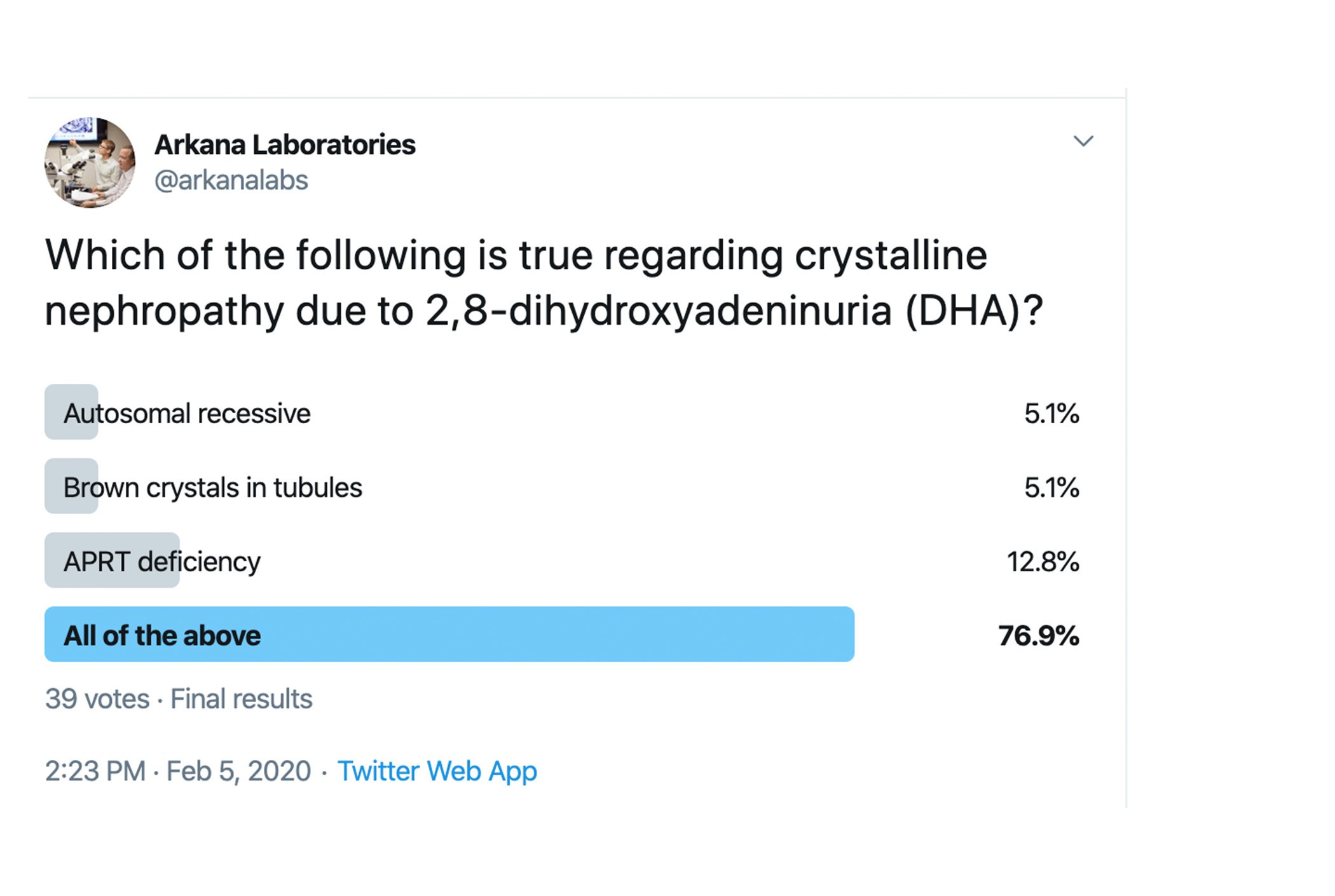ANSWER: D, All of the Above
2,8-dihydroxyadeninuria (DHA) disease is a rare autosomal recessive disorder caused by complete adenine phosphoribosyltransferase (APRT) deficiency and manifests as recurrent nephrolithiasis. 2,8-DHA can lead to irreversible renal failure and frequently recurs in the transplants.
Adenine phosphoribosyltransferase (APRT) deficiency is a rare autosomal recessive inherited disorder of purine metabolism. APRT catalyzes the formation of adenosine monophosphate from adenine. In the absence of APRT activity, adenine is catabolized by xanthine oxidase to 2,8-dihydroxyadenine (DHA), which is excreted in the urine. DHA is insoluble in the urine at the physiological range of pH, which may lead to crystalluria.
The disease is limited to the kidney, and most patients present with a history of recurrent nephrolithiasis that can appear at any age but often during childhood. Infants may have recurrent urinary tract infections and red-brown diaper stains.
The most prominent histologic features include acute and chronic tubulointerstitial nephropathy with acute tubular injury involving non-atrophic tubules, moderate to severe tubulointerstitial fibrosis and numerous DHA crystals. The DHA crystals stain brownish-green to brown on H&E and PAS stains, light blue on Masson trichrome and black on Jones methenamine silver stains. They are also strongly birefringent when examined under polarized light.
DHA disease is an under-recognized condition that can lead to irreversible renal failure and frequently recurs in the transplants.
REFERENCES:
Harambat J, Bollee G, Daudon M, et al. Adenine phosphoribosyltransferase deficiency in children. Pediatr Nephrol 2012;27(4):571-579.
Nasr SH, Sethi S, Cornell L, et al. Crystalline nephropathy due to 2,8-dihydroxyadeninuria: and under-recognized cause of irreversible renal failure. Nephrol Dial Transplant 2010;25:1909-1915.
Quick note: This post is to be used for informational purposes only and does not constitute medical or health advice. Each person should consult their own doctor with respect to matters referenced. Arkana Laboratories assumes no liability for actions taken in reliance upon the information contained herein.

